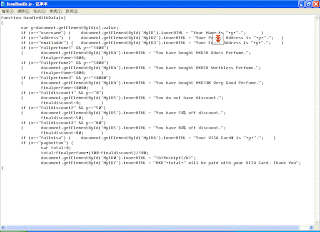Exercise 10: Application server platforms in E-commerceQ1. Goto the website of IBM, Oracle, Microsoft and Sybase. Is there any mention of e-commerce associated with their database products? What suite or partnership do they list with related E-commerce offerings? How do they compare with open source products like MySQL?
Answer:Yes, IBM has mentioned e-commerce associated with DB2 product, for example,
IBM.com (2006) shows there is a topic called "Mining your Business in Retail with IBM DB2 Intelligent Miner". IBM DB2 Intelligent Miner is used to apply data mining technique to generate automatically product recommendations for customers in a possible e-commerce shop environment. IBM.com lists the partnership with related e-commerce offerings, for instance,
IBM and Arbor Software have delivered on the strategic development and marketing relationship. Also,
Cognos, a global leader in business intelligence tools, and IBM, announced that IBM will bundle Cognos' market-leading business intelligence tools, Impromptu and PowerPlay, with DB2 and DB2 OLAP Server. IBM.com compares DB2 with MySQL, in terms of, Graphical User Interface, Backup & Recovery Tools, Administration & Basic Tasks, and Data Movement.
Yes, Orcale has announced that Siebel E-Commerce 8.1.1 is the next-generation of Siebel eSales. Siebel eSales has been designed to enable companies to manage multi-channel interactions with consistency and agility. Sophisticated selling rules such as pricing, eligibility, compatibility, and configuration can be managed once within Siebel CRM and deployed anywhere across the enterprise. All customer interactions transition seamlessly from self-service, to assisted care, into the call center, and back out to the self-service channel while giving customers transparent access to the real time information they need to do business. Features include Browse and Compare Products, Up-sell/Cross-sell, Configure Products, Shopping Cart & Checkout, Asset-based Ordering, View Order Status and Site Administration.
(Orcale, 2009)Oracle lists the partnership with related e-commerce offerings, for example, Oracle and partner
Quistor will maximize the payoffs of BPO with Quistor's Learning BPO solution based on the Oracle iLearning technology. Beside Quistor,
Genesys has had a long and rich partnership with both Oracle and Siebel, providing enterprises with the industry's most complete solutions for managing customer interactions across sales and support units.
Oracle compares Oracle Database with MySQL, according to, Database security, Schema Migration, Data Types, and Data Storage Concepts.
Yes, Microsoft having Microsoft SQL Server has states that the Microsoft TerraServer stores aerial and satellite images of the earth in a Microsoft SQL Server database served to the public through the Internet. The TerraServer is also an E-Commerce application
. Microsoft lists
U.S. Geological Survey and
Tometa as partners with the e-commerce offerings of Microsoft SQL server.
(Microsoft, 1998)Microsoft compares Microsoft SQL Server with MySQL, in terms of, Features, Licensing, Performance, Replication, Security and Recovery.
(Tometa, 2006)Yes, Sybase has mentioned that Sybase Power Sybase lists paybox - the Furthering Mobile Commerce as a partner.
Sybase compares Sybase ASE with MySQL, in terms of, Performance, Data Management, Scalable and Platform.
(Sybase, 2008)Reference:1. IBM.com (2006). "Mining your Business in Retail with IBM DB2 Intelligent Miner". IBM.com, Retrieved Mar-16th-2009 from URL -
http://www.ibm.com/developerworks/edu/dm-dw-dm-retail_tutorial-i.html and
http://www-03.ibm.com/press/us/en/pressrelease/2779.wss2. Oracle (2009). "About Siebel E-commerce 8.1.1". Oracle.com, Retrieved Mar-16th-2009 from URL -
http://www.oracle.com/applications/crm/siebel/self-service-ebilling/siebel-e-commerce-8-1-1.html,
http://www.oracle.com/profit/partner/082007_quistor.html, http://download.oracle.com/docs/cd/E12151_01/doc.150/e12155/oracle_mysql_compared.htm and http://www.oracle.com/siebel/ptr_quote.html3. Microsoft (1998). "Microsoft TerraServer". Microsoft.com, Retrieved Mar-16th-2009 from URL -
http://msdn.microsoft.com/en-us/library/aa226316(SQL.70).aspx4. Tometa (2006). "MySQL 5.0 vs Microsoft SQL Server 2005". Tometa Software, Retrieved Mar-16th-2009 from URL -
http://www.tometasoftware.com/MySQL-5-vs-Microsoft-SQL-Server-2005.asp
5. Sybase (2008). "Performance Comparison of ASE 15 vs MySQL 5.0 White Paper". Sybase.com, Retrieved Mar-16th-2009 from URL -
http://www.sybase.com/detail?id=1061086,
http://www.sybase.com/detail?id=1008953 and
http://www.sybase.com/detail?id=1045499
 Diagram-28 - The Successful Installation of InstantRails in my home-PC
Diagram-28 - The Successful Installation of InstantRails in my home-PC











